-
How & when to prune Hydrangeas: Beginners guide to beautiful blooms
 Lee Burkhill: Award Winning Designer & BBC 1's Garden Rescue Presenters Official Blog
Lee Burkhill: Award Winning Designer & BBC 1's Garden Rescue Presenters Official Blog

Updated 2024: Understanding how to prune hydrangeas is key to ensuring fantastic flowers on your hydrangea shrubs. Hydrangeas give a real show of huge flowers for months during the summer. Their flowers can then be left in situ, fading from their vibrant early summer colours into translucent winter flower heads. The hydrangea is the true workhorse of the garden shrubs and is very easy to look through pruning.
Most gardeners would be hard-pushed not to recognise a Hydrangea. Hydrangeas are the classic 'Granny's garden' shrub that has textured leaves and massive blue, pink, white or mauve flower heads.
Hydrangeas are best suited to dappled or part shade and, once established, will provide a robust shrub with both detailed foliage and some wonderfully diverse flower heads. These can be left on the plant for months of interest or used as cut flowers or dried for various decorative uses.
This page contains affiliate links for products I use and love. If you take action (i.e., subscribe or make a purchase) after clicking a link, I may earn some gardening commission, which will help me keep the Garden Ninja Blog free for all.
Before we jump into pruning our hydrangeas with secateurs in hand, it's important to understand the types of hydrangea you may be dealing with to work out when and how to prune them.
Group 1: Hydrangeas that bloom on old wood or last year's growth. These should be pruned in late summer, usually by just deadheading them and a light tidy up:
Group 2: Those that bloom on new growth/wood and should be pruned in late winter to early spring by cutting back to outward-facing buds and removing older growth each year:
Each area will differ slightly, but I prune my Hydrangeas in early March here in the UK.
This guide will help you prune the most common types of Hydrangea, such as mopheads, lacecaps and paniculatas. For most Hydrangeas, late winter and early spring are the best time to prune and remove their old seed heads and cut back to an outward-facing bud.
We leave the faded flowers throughout winter to add interest to the garden and offer frost protection to the shrubs during the harsher months.
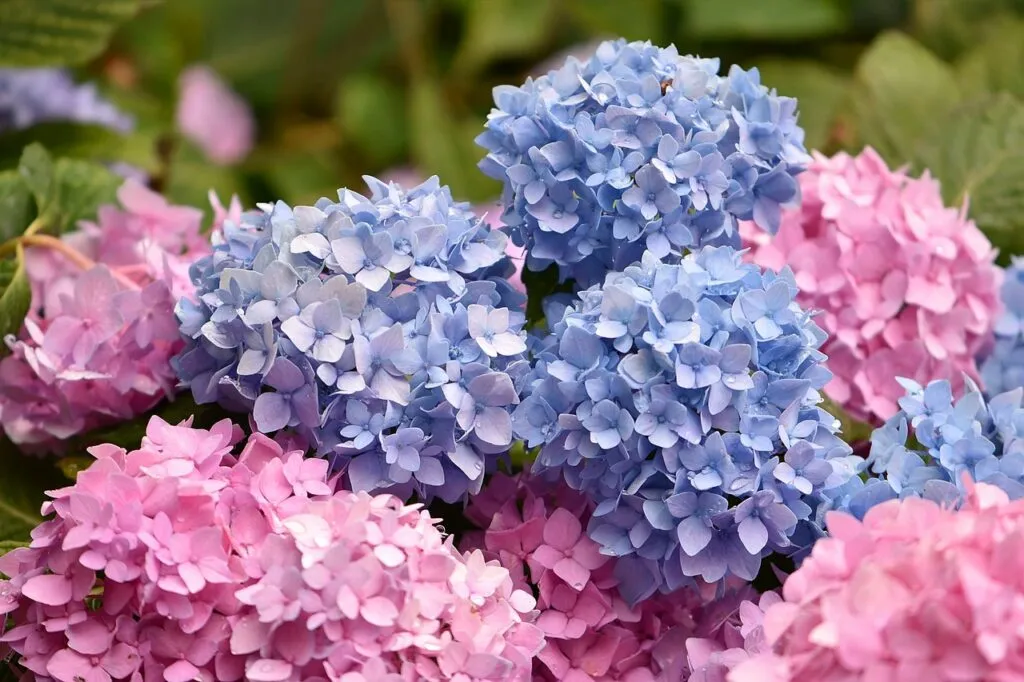
While most gardeners prune hydrangeas in late winter or early spring, there are a few exceptions, notably climbing hydrangeas and oakleaf hydrangeas from Group 1.
Oakleaf hydrangeas are usually evergreen shrubs that need little shaping other than removing dead branches. Snip off the flower heads in late summer when they are finished, but then leave the shrub. You don't need to spring prune these types of Hydrangeas unless they need a tidy-up.
Below is a list of when to prune different types of hydrangea. The pruning technique is very similar for all three except for the climbing hydrangea, where you just remove the spent flowers and do a light tidy-up.
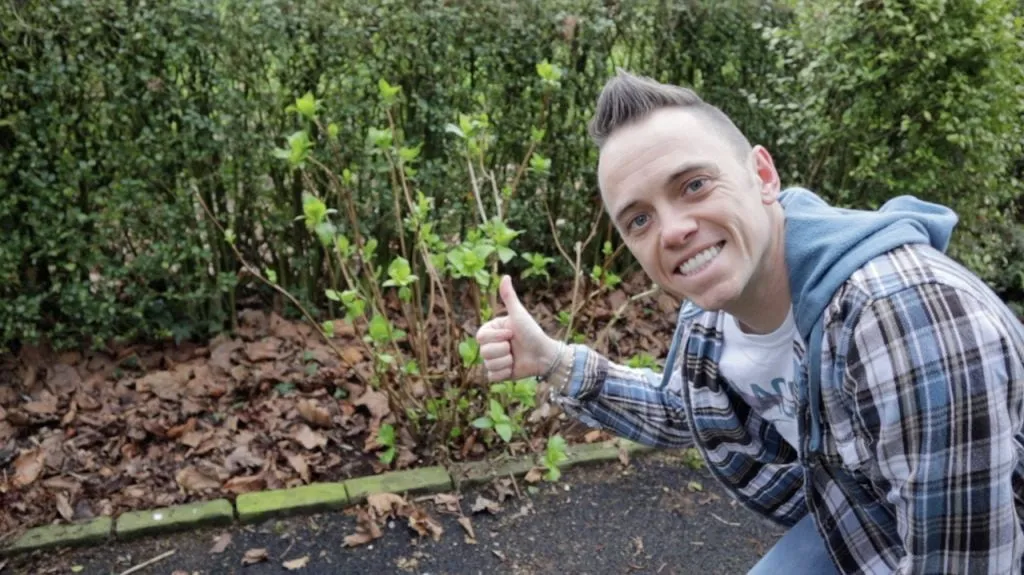
Pruning Hydrangeas couldn't be simpler. This guide will help you avoid some of the common Hydrangea pruning mistakes and rookie errors, which will help you get the most out of these lovely shrubs and provide maximum interest throughout the year!
If you have species not listed above, a mid-spring prune is the safest bet, or seek more specialist advice based on your plant type. This guide will help you get your Hydrangeas in top shape!
Did you know that you can take my course and learn how to become a Garden Ninja yourself? Click here for details
The quick answer is yes. You will need to prune your hydrangea each year to help keep it in a neat and tidy shape. If you don't prune your hydrangeas each year, then the old flowers can get tangled with new growth.
What you will also find is that over time, the hydrangea gets taller and 'leggier' as the years go on. Hydrangeas that are left unpruned result in spindly or leggy shrubs with flowers on the top of the hydrangea plant and then exposed woody bare stems below.
Below is an example of a well-pruned bushy Hydrangea.
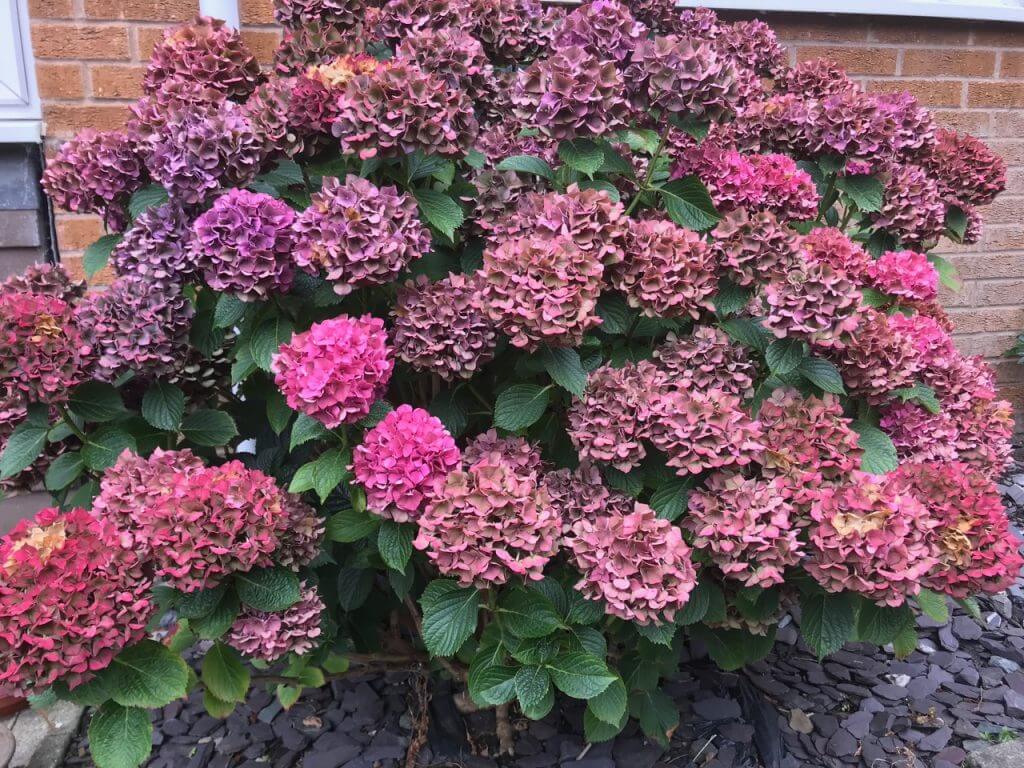
Hydrangeas tend to flower better on newer wood. So, by keeping your hydrangeas pruned each year, you're encouraging fresh growth, which will bring you vibrant, healthy flowers each year.
It is easy to tell if your hydrangea needs a prune; the spent flowers will be brown and crispy. Also, the leaves usually fall off during the winter, leading to buds in the spring. When these buds have emerged, you know it is time to prune your hydrangeas.
Pruning a Hydrangea couldn't be simpler and requires very little in the way of pruning. All you need is a sharp pair of secateurs, and you're ready to prune.
I prune mine here in the UK in March. It doesn't take long to prune hydrangeas, and there's very little damage you can do that won't grow back. So please don't be put off pruning in the worry you will somehow damage your Hydrangea!
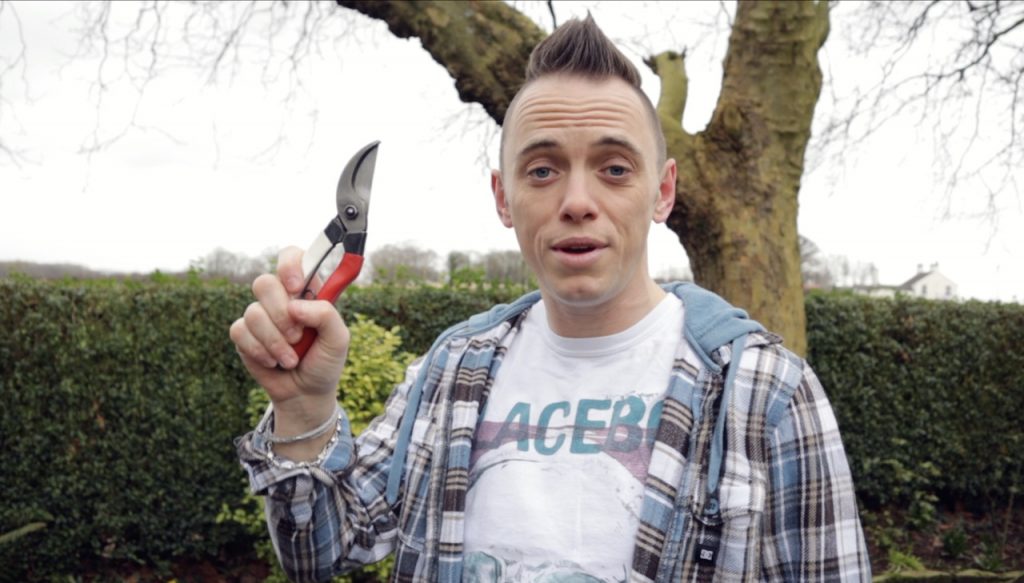
Grab a sharp pair of clean secateurs before you start. Clean, sharp secateurs are essential, and pruning and tidying up hydrangeas are no exception. The cleaner the cut, the faster the hydrangea will heal and also less disease or potential damage from snagged secateurs.
The first step is removing the previous year's dried brown seed heads. I take these back just above the next set of green buds, which are emerging. I do this first before thinning or reducing the height of the shrub as it gives me a better view of the overall shrub size and shape.
This, in turn, will allow you to make better pruning decisions for the next few steps. This means less fuss or concern about what to cut back as you have a clearer view.
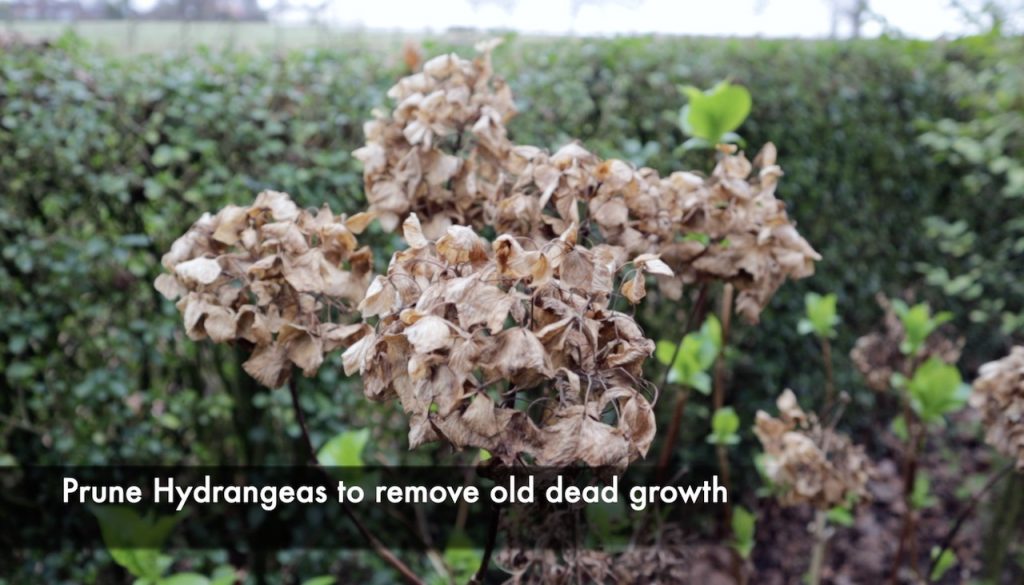
The dried seed heads of the hydrangea are now spent. Remove them for a cleaner, neater-looking hydrangea shrub. You can use them in flower arranging or compost these hydrangea flowers to recycle them.
The second step in Hydrangea pruning is to remove 1/4 of the oldest growth back to the ground.
By removing around 1/4 of the oldest wood/stems, you can help keep your Hydrangea productive as energy will then be sent into new fresh growth. Over time, older stems will get longer and less productive, leading to potential bare patches and less productive displays.
Take these older stems right back to the ground in a clean, sharp cut. This will encourage fresh new growth and keep the Hydrangea on its toes to perform!
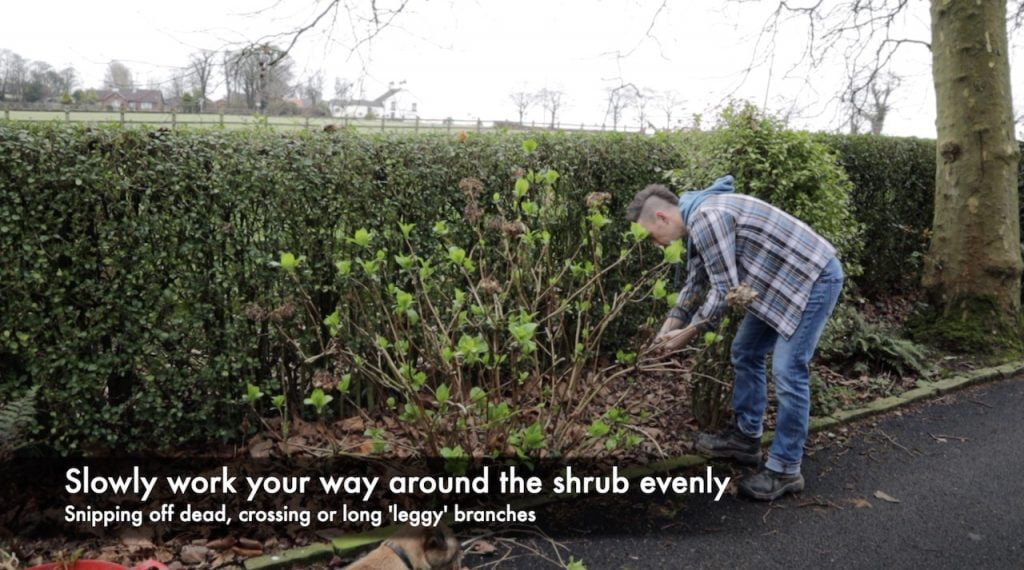
If your hydrangea shrub is looking congested or very 'busy' in the centre, it's best to thin it out. Congested hydrangeas are more prone to branches rubbing each other, causing damage or getting infected by mildew due to lack of airflow.
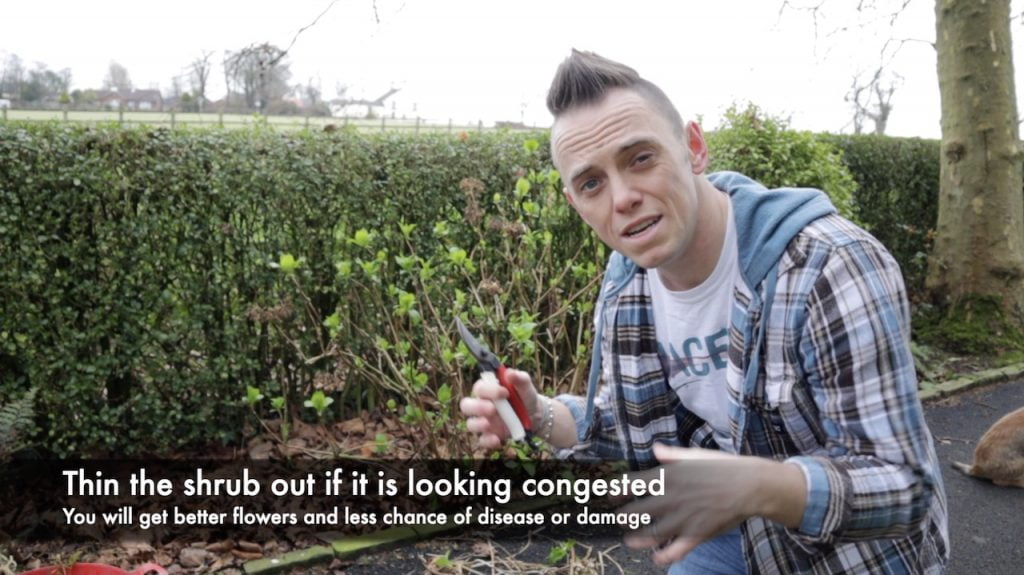
Once you've removed the flower heads and cleared some of the older stems, the next step is to thin out any congested growth or crossing branches. These will tend to rub and have a higher chance of damage. Also, flowers that may be sent out in these tangled areas may get crushed or become damaged.
So it's best to be brave and remove these branches, opting for the stronger of the two when crossing.
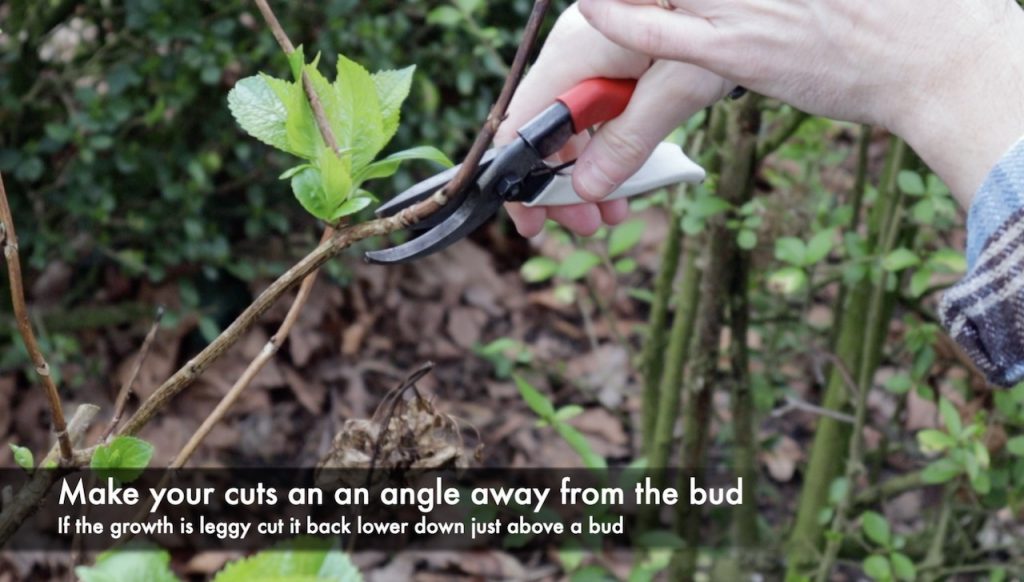
Damaged stems may be snapped or may show signs of black dieback, both of which need to be removed. Either cut back to the next healthy bud down or remove to the ground if needed. Don't panic if you take off too much during the pruning process.
Plants are incredibly tough and will always bounce back. A hard prune always gives your plants an added boost during the next growing season! If you don't prune back damaged wood, it can get infected and take valuable resources from the plant in trying to heal them, leading to fewer hydrangea flowers and a lacklustre shrub.
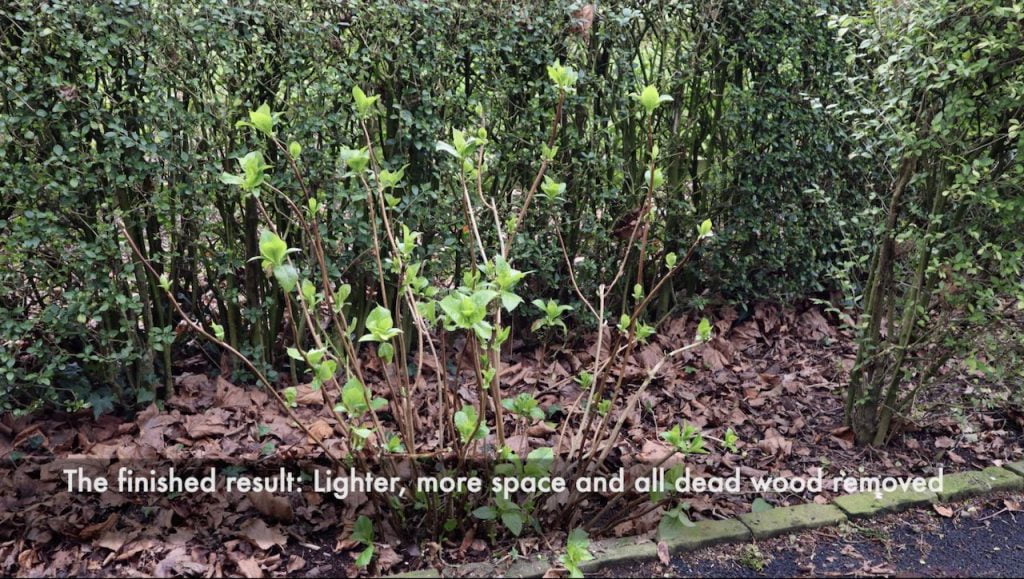
Once you've removed the three Ds: damaged, diseased or dead wood, and you've taken out 1/4 of the oldest stems, it's time to prune for flowers!
Remove the top 1/3 of hydrangea growth back to a fresh bud or leaf node. The picture below shows where we are about to prune, removing the previous year's stem, the dried flower heads having been cut off.
By pruning just above the bud, you're helping keep the hydrangea compact and robust. If you leave it as is, although it may flower, it often becomes top-heavy and looks bare further down. Cutting it above a bud 1/3 of the way down gives a full-looking shrub come flowering time.
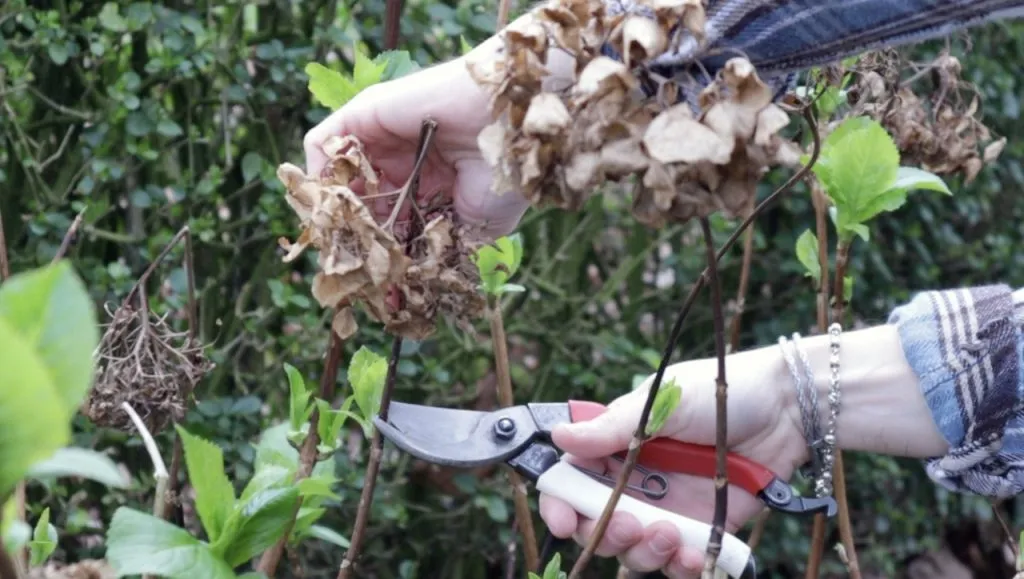
Once you've finished, you should be left with an open, airy shrub with plenty of airflow and no crossing stems. Usually, these shapes are more rounded than square, as this follows the natural form of your hydrangea. I prefer not to clip or prune things into boxes unless it's a formal garden. Hydrangeas don't suit this type of formal pruning.
Once you've finished pruning, your Hydrangea clippings can be composted, and your Hydrangea is now in a perfect position to put on gorgeous flowers all summer long!
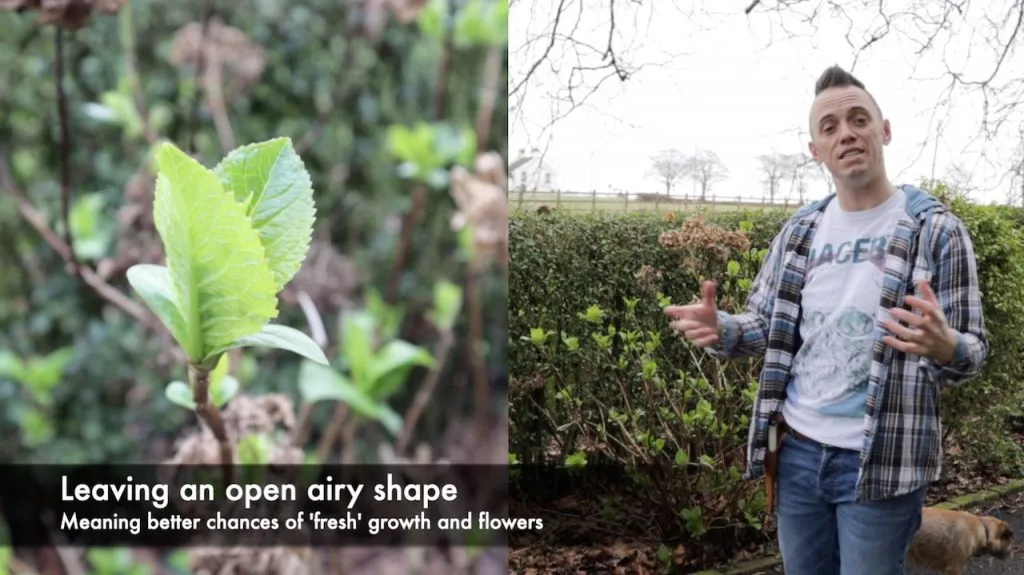
Because you've opened up airflow by pruning your hydrangea, you will find it less susceptible to disease and damage throughout the year. This means that your hydrangea will flower more profusely and not have to waste energy on repairing damaged wood. So it does pay to prune your hydrangeas each year for maximum flowers in your garden each year!
Here are the key benefits of pruning a hydrangea:
Pruning can stimulate the growth of new stems and encourage more flowers on your shrub. For many hydrangea varieties, the best flowers appear on new wood.
Pruning allows you to manage the size and shape of your hydrangea bush. This is particularly useful if your hydrangea has outgrown its space or if you want to maintain a specific shape or height.
Pruning helps to eliminate dead, damaged, or diseased branches, which not only improves the shrub's appearance but also prevents the spread of disease and enhances its overall health.
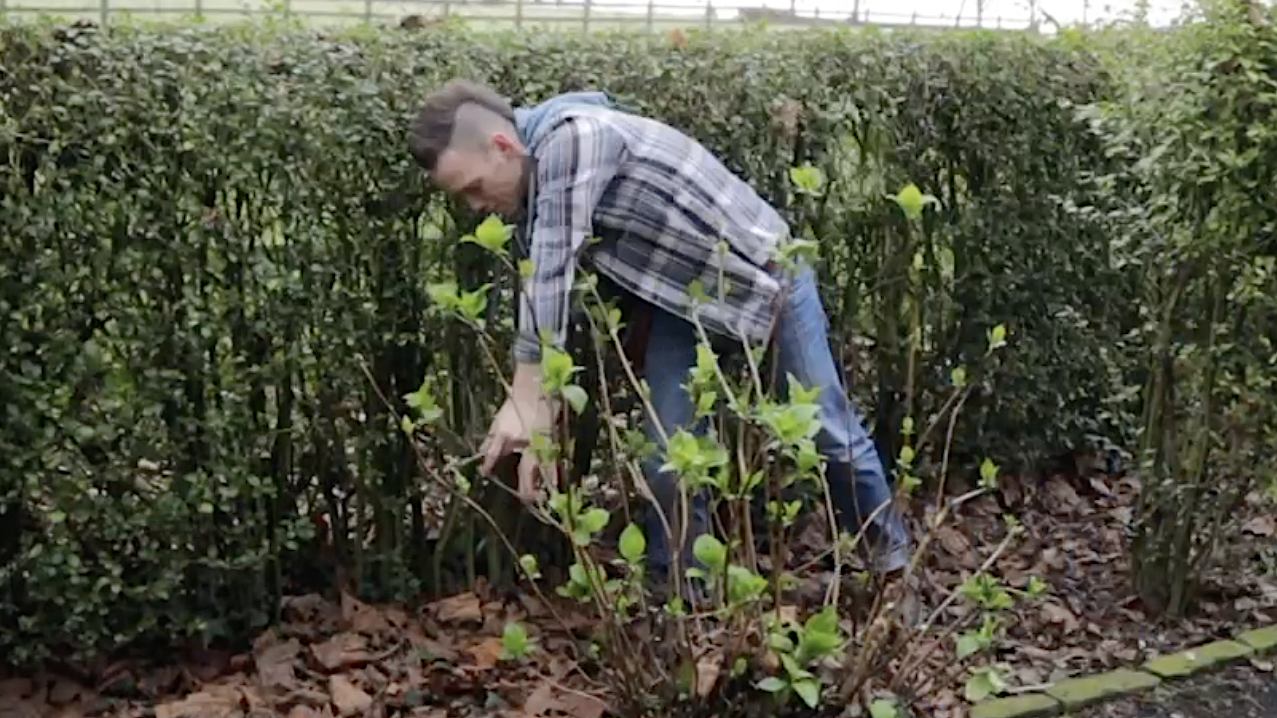
Thinning out the interior of the shrub through pruning promotes better air circulation. This reduces the risk of diseases like powdery mildew and allows sunlight to reach all parts of the plant, supporting better growth.
By reducing the number of flower clusters, you can direct more energy to the remaining blooms, resulting in larger, more robust flowers. Pruning can help create a more visually pleasing and well-proportioned hydrangea bush. You can achieve a balanced shape and remove leggy or overgrown branches.
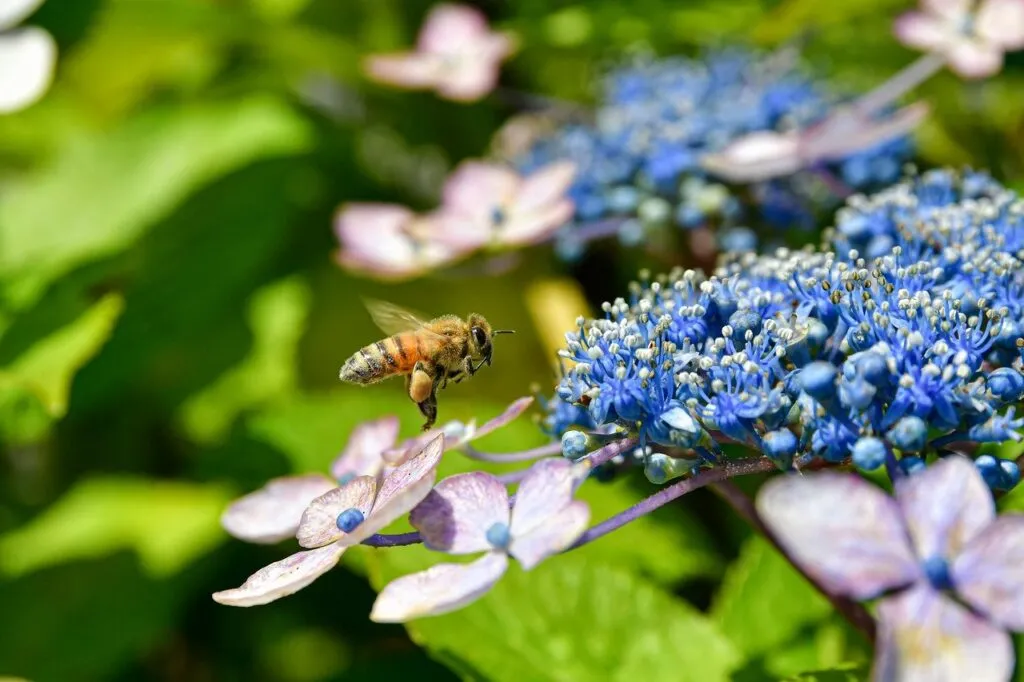
Hydrangeas that have become overgrown or have stopped producing robust blooms can benefit from rejuvenation pruning. This involves cutting the entire shrub back severely to encourage fresh, vigorous growth.
Pruning can help hydrangeas develop sturdier stems capable of supporting the weight of their large, showy flowers. This can reduce the risk of stems bending or breaking under the weight of the blossoms.
For hydrangeas grown in containers or pots, regular pruning is essential to keep the plant at a manageable size and prevent it from outgrowing its container. Pruning and mulching it help keep it healthy and floriferous!

The key to successful Hydrangea pruning is clean, sharp tools, which makes the task of keeping hydrangeas in top form super easy. With the wrong tools, pruning hydrangeas becomes a pain, and you can cause more harm than good.
Clean and sharp pruning tools are essential for effective and healthy pruning for several reasons:
Sharp tools make clean cuts that heal faster and reduce the risk of disease entry. Ragged or jagged cuts can provide entry points for pests and pathogens, potentially harming the plant.
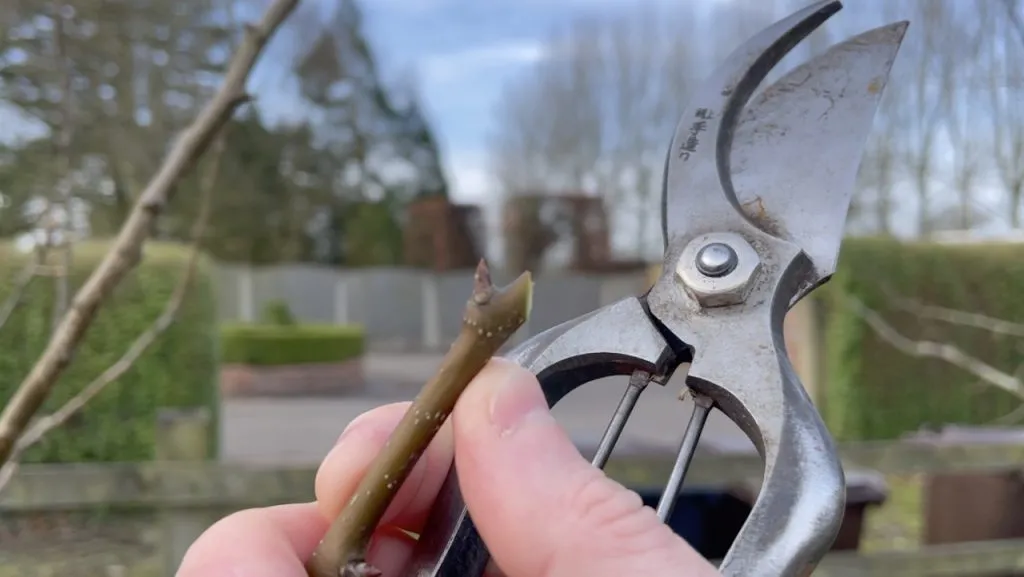
Sharp tools require less force to make cuts, reducing stress on both the pruner and the plant. Less effort means you're less likely to damage the plant or strain your muscles.
Clean cuts made with sharp tools heal quickly, minimizing the time that wounds are open and vulnerable to infections. This promotes overall plant health and recovery.
Sharp tools allow for precise and accurate pruning, helping you achieve your desired results without damaging nearby branches or the plant's structure.
Dull tools can crush and tear plant tissue, causing unnecessary damage. Clean, sharp cuts reduce the risk of injury to the plant and ensure a tidier appearance.
Pruning with sharp tools is more efficient, saving you time and effort during the pruning process. You can accomplish more tasks with less fatigue.
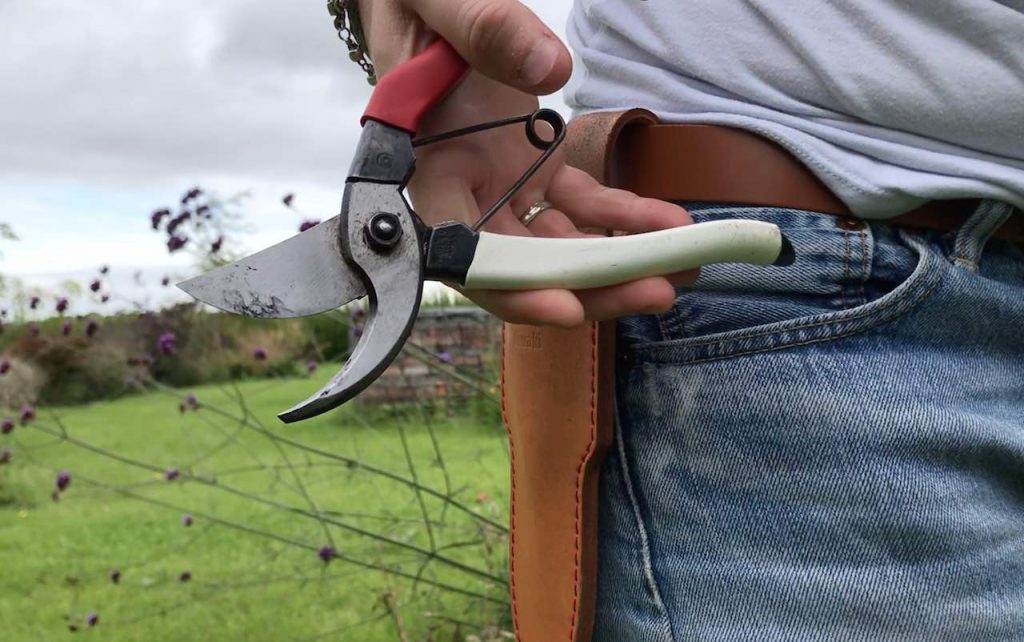
Regular maintenance and sharpening of your pruning tools extend their lifespan, providing better value for your investment.
Clean and sharp pruning tools make the pruning process easier and more efficient and contribute to your plant's overall health and well-being. Properly maintained tools ensure that pruning is a precise, effective, and less stressful endeavour for both you and your garden.
Hydrangeas are acidic soil-loving plants that prefer a soil pH of 5.5 or lower.
This means that they need this pH to access the full spread of macro and micronutrients in the soil. Planting in alkaline soil reduces their access to certain micronutrients like iron or calcium, causing them to show signs of illness.
Hydrangeas are probably the least fussy of all the calcifuges (acid-loving plants that hate alkaline conditions). So if your soil is neutral pH 7, then you should be fine. A soil testing kit like this one can help you assess the conditions of your soil.
They will survive in nearly all soil types, in particular, clay which is really nutrient-rich. The only conditions Hydrangeas hates are super dry roots. They will tolerate dappled and part shade, which is great for those trickier garden aspects the ones that don't get huge amounts of sun.
The next big question is about mulching Hydrangea. Mulching is the act of adding a top layer of organic material such as peat-free compost or well-rotten manure on top of the soil around the base of your shrubs.
Mulching helps feed your plants slowly over the course of a year, helps retain moisture and also reduces weeds. It's a really beneficial way to keep your plants healthy. Mulching also keeps weeds down and can prevent extreme heat waves from damaging your hydrangeas, so it's always worthwhile giving them a good top dress of compost each spring and autumn.
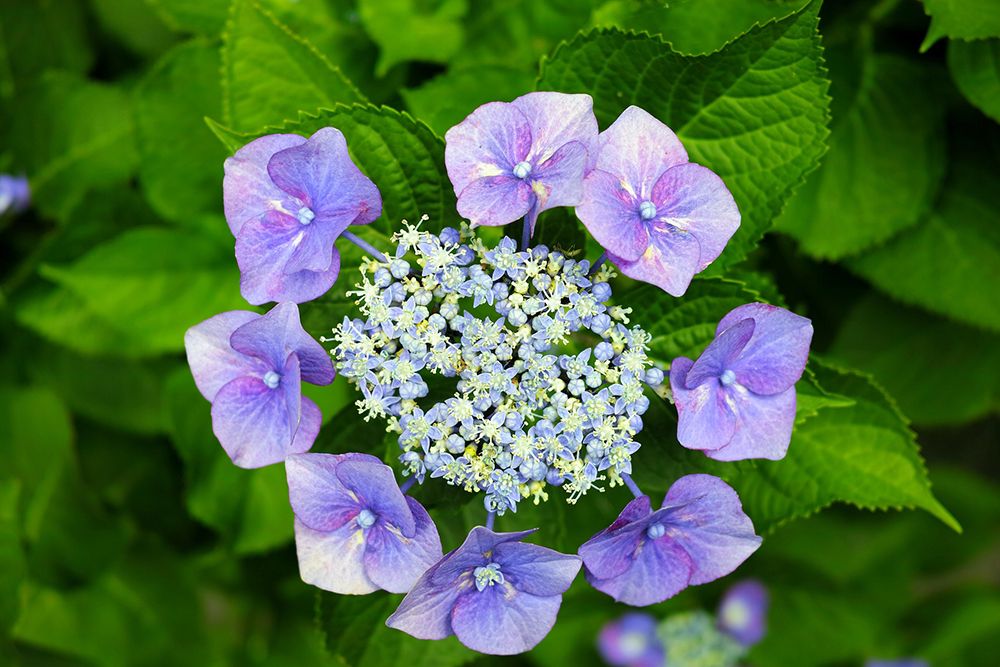
The best compost to mulch hydrangeas with is ericaceous compost. This has a lower PH, enabling the hydrangea to access the nutrients it needs. Whilst normal compost will suffice, ericaceous (acidic) compost will help your hydrangeas grow stronger quickly.
There is some debate that lowering the PH of your soil with a pine needle or peat mulch can help turn Hydrangea flowers blue. I see this all the time on social media. People add loads of ericaceous compost, plant fertilizers and such. The quick answer is no, not easily.
However, this is not an exact science, and in my experience, I would enjoy the colour of the hydrangeas you have now. It can often be frustrating and expensive trying to change them, leading to disappointment. After all, keeping non-acidic soil acidic will take a lot of mulch and messing around.
Most hydrangeas will give you the colour that the soil and their conditions allow. So I wouldn't try to change it!

Propagating hydrangeas from cuttings is an excellent way to expand your garden with new plants that are genetically identical to your existing hydrangeas. This method is cost-effective and allows you to replicate your favourite hydrangea varieties. You can propagate hydrangeas from your pruning cuttings, too, so there is no waste when pruning your hydrangeas each year.
Here's a step-by-step guide on how to propagate hydrangeas from cuttings:
1. Healthy Hydrangea Plant: Choose a healthy, well-established hydrangea plant from which to take cuttings. Ideally, select a non-flowering shoot or branch, as it's best to propagate from non-blooming growth.
2. Sharp Pruning Shears or Knife: You'll need a clean and sharp tool to take cuttings without causing excessive damage to the parent plant.
3. Rooting Hormone: This is an optional but helpful addition to encourage root development in the cuttings. Rooting hormone can be found at your local garden centre.
4. Potting Mix: A well-draining potting mix, such as a mixture of perlite and peat moss, is suitable for rooting hydrangea cuttings.
5. Pots or Containers: Small pots or containers that are at least 3-4 inches deep are ideal for planting the cuttings.
6. Clear Plastic Bag or Plastic Dome: This is used to create a humid environment to encourage root development.
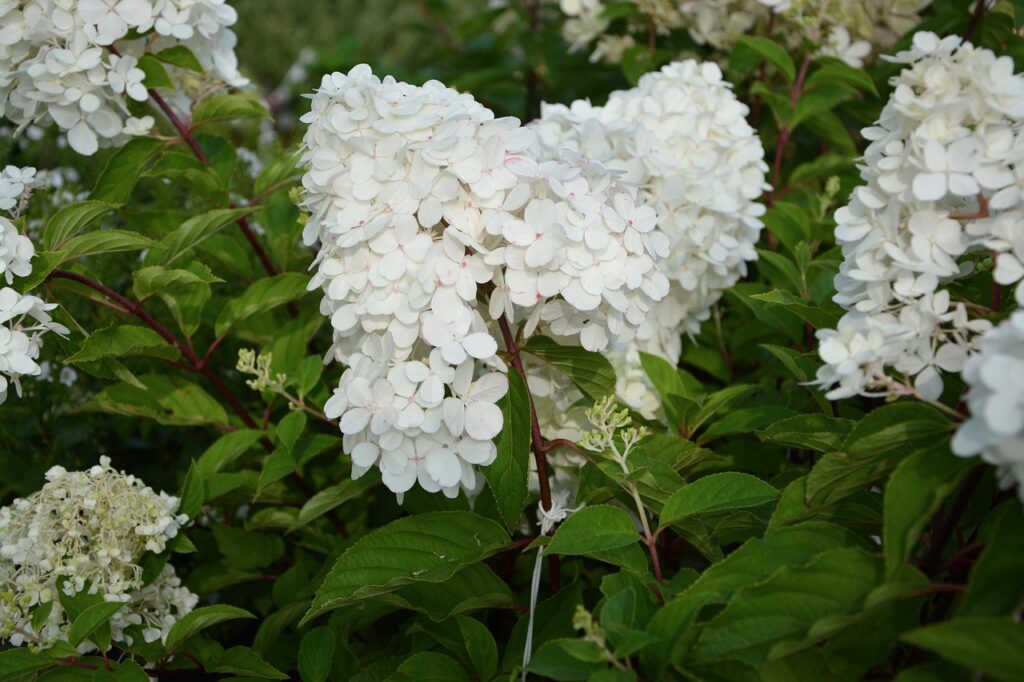
Follow the steps below to easily make and take cuttings from Hydrangeas to propagate them for free. Help bulk up your garden or provide hydrangeas to give to your friends!
The best time to take hydrangea cuttings is during the late spring or early summer when the plant is actively growing. Choose a healthy, non-flowering shoot or branch.
Using your sharp pruning shears or knife, take cuttings that are around 4-6 inches long. Each cutting should have at least one leaf node, which is where new roots will form. Remove any flowers or flower buds from the cutting.
Trim the cutting so that you have a clean stem with a leaf node at the top and no leaves on the lower part of the stem. This will prevent excess moisture loss and encourage root development.
Dip the cut end of each cutting in rooting hormone if you have it. This can help stimulate root growth, although it's not strictly necessary for hydrangeas.
Fill your pots or containers with the potting mix. Make a small hole in the mix for each cutting using a pencil or stick.
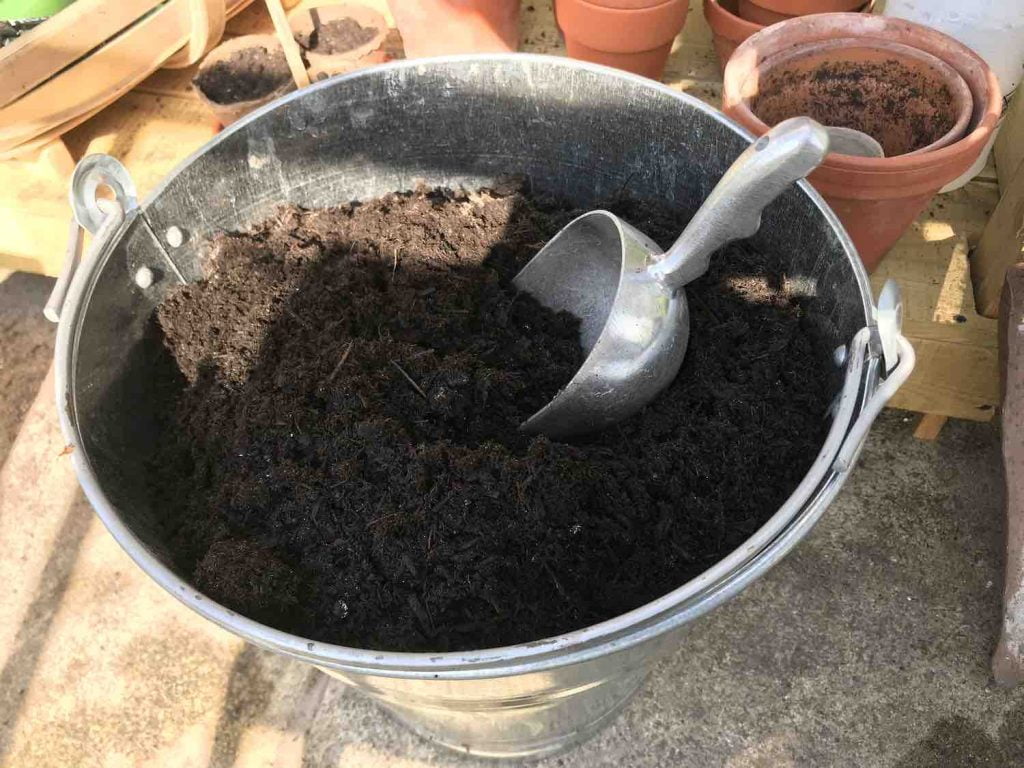
Insert the cuttings into the holes you've made in the potting mix. Firmly press the mix around the cuttings to ensure good contact.
To create a humid environment for the cuttings, cover them with a clear plastic bag or place a plastic dome over the pots. This helps maintain high humidity, which is essential for root development.
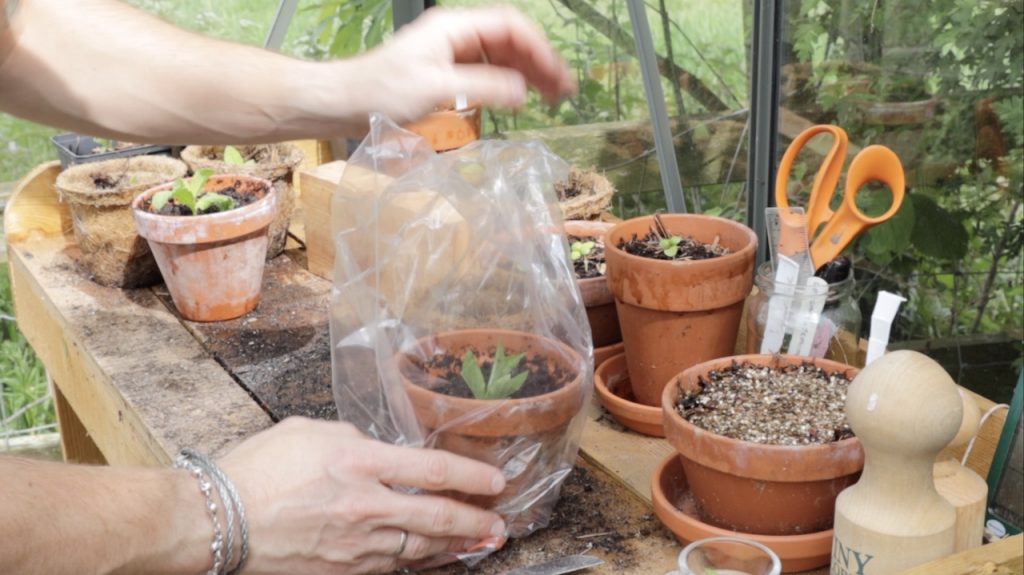
Keep the cuttings in a location with indirect light or dappled shade. Avoid direct sunlight, as it can dry out the cuttings. Ensure the soil remains consistently moist but not waterlogged.
Check the cuttings regularly for signs of growth, such as new leaves. This can take several weeks to a few months, so be patient. Another top tip is when roots emerge from the bottom of the pot and then are ready to transplant.
Once the cuttings have established roots and show healthy growth, typically after a few months, they can be transplanted into larger pots or directly into your garden.
Remember that not all hydrangea cuttings will successfully root, so it's a good idea to take several cuttings to increase your chances of success. Propagating hydrangeas from cuttings is a rewarding way to expand your garden and share these beautiful plants with others.
If you've just pruned your Hydrangea, why not move on to other plants, trees and shrubs with my other beginner pruning guides? Ensuring that your entire garden is full of healthy, floriferous plants. I guarantee that once you see the benefits of pruning, there will be no stopping you!

Pruning hydrangeas is a crucial practice that provides a multitude of advantages for these beloved flowering shrubs. First and foremost, it stimulates the growth of new stems and encourages the development of more vibrant blooms, particularly as many hydrangea varieties produce their flowers on new wood.
Furthermore, pruning hydrangeas allows gardeners to exert control over the size and shape of their hydrangea bushes, ensuring they keep their balanced shape and flower profusely each year.
Regular pruning also plays a pivotal role in the overall health of these shrubs. It removes dead, damaged, or diseased branches, thereby reducing the risk of disease spread and enhancing the plant's vitality. Additionally, it fosters better air circulation within the shrub, mitigating disease risks and ensuring that all parts receive sufficient sunlight for growth.
Hydrangeas regularly pruned yield larger and more vigorous flowers as resources are directed to the remaining blooms.
If you have questions or pruning comments, why not let me know below? You can Tweet, Facebook or Instagram me. You can also follow me on YouTube where I’ve got plenty of garden guide vlogs!
Happy Pruning!


You must be logged in to post a comment.

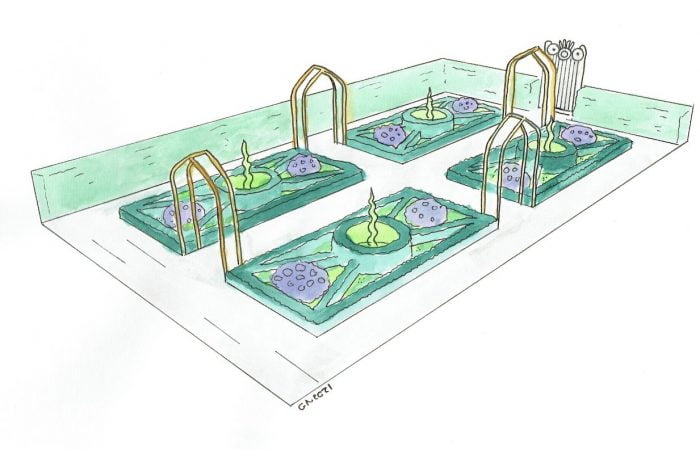
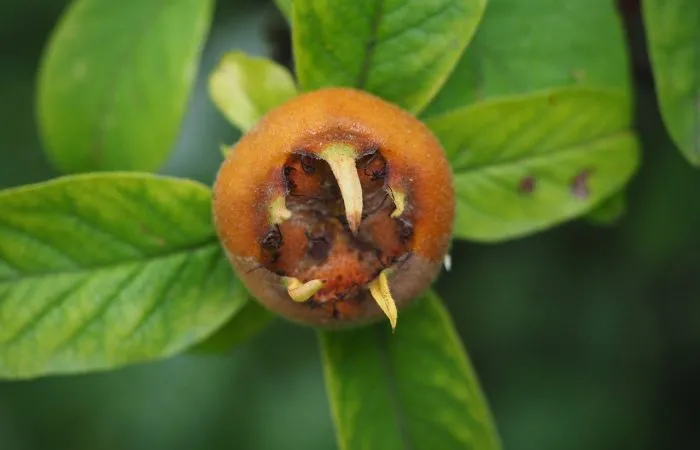
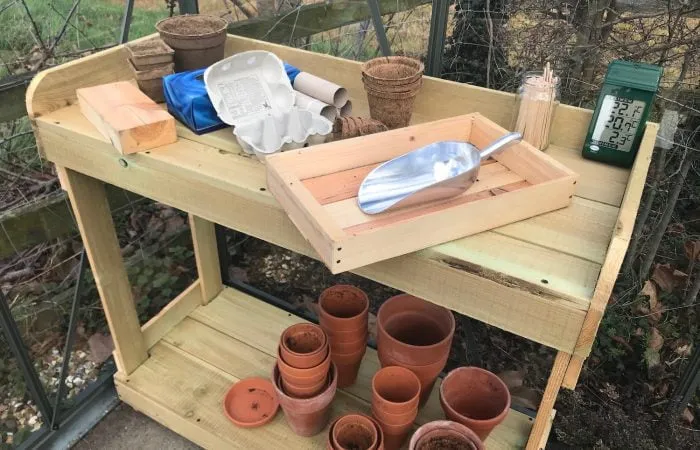
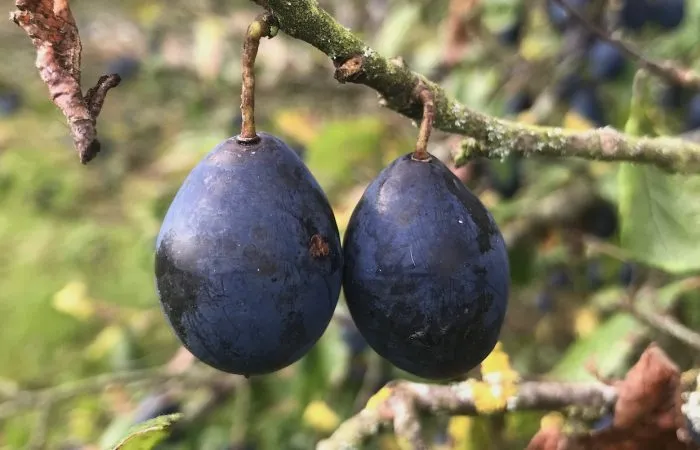
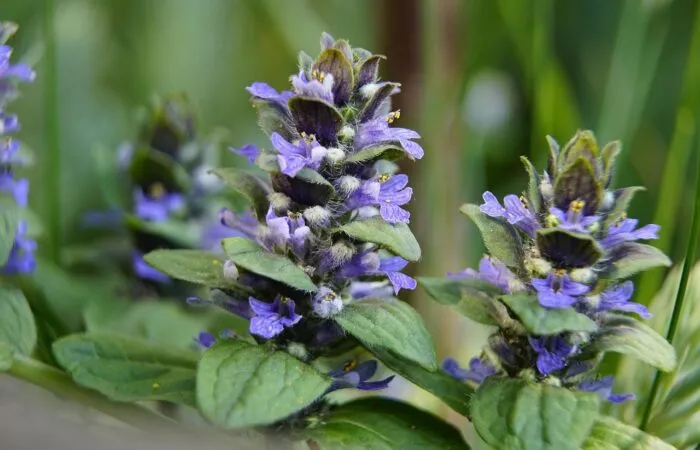
JOIN THE NINJAS

Be the first in line for new Guides, Discount codes and Offers
I limit my trimming on my hydrangeas as the deer eat the lower branches. So, most of the flowering is at the tops of the bushes. How do I determine what to trim out at the base of the plant?
I love reading your gardening blog! Thank you for sharing your knowledge and expertise. This article was very helpful.
Hydrangeas are recognizable for their vibrant flower heads. They’re easy to care for, ideal for partial shade, and offer diverse blooms. Pruning tips for common types are shared, helping gardeners maintain their beauty and shape. Proper pruning ensures a tidy look and encourages healthy growth.
Great tips! I’ve always been unsure about when and how to prune my hydrangeas, but this guide made it really clear. I can’t wait to try these techniques in my garden this spring! Thank you for sharing!